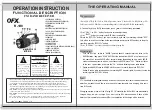
Connecting and Terminating
14-6
Ethernet
2.
Once the housing stops moving in, turn the metal housing clockwise while
continuing to apply light forward pressure. It is likely that the female connector
will have to be secured in order to stop it from rotating as you turn the male
connector.
3.
The locking keys of the female connector will pull the connector in until they
reach the circular locking holes at the end of the guide channels. The keys will
click the connector into place and hold it there.
If a link indicator is present for the connector, check that it is on. If the link
indicator does not show a valid connection, perform the following actions until
you achieve a link.
•
Examine the BNC connector for a bent or damaged center pin. A
badly-corroded pin may not connect properly.
•
Verify that the cable is 50 Ohm RG-58 A/U type thin coaxial cable.
•
Examine the cable for breakage or kinks that may indicate fracturing of the
cable due to overbending or poor maintenance.
•
Check the cable for continuity.
•
Check that the thin coaxial cable segment meets the cable specifications
outlined in Ethernet Network Requirements.
•
If all else fails, contact Cabletron Systems Technical Support.
To remove the BNC connector, perform the numbered procedures above in
reverse order, turning the metal housing counter-clockwise and pulling the
connector straight off of the female BNC connector.
Summary of Contents for 100BASE-FX
Page 1: ...Cabletron Systems Cabling Guide...
Page 2: ......
Page 4: ...Notice ii...
Page 22: ...Cabling Terms 2 8 Test Characteristics...
Page 54: ...Ethernet Media 4 30 Connector Types...
Page 72: ...Full Duplex Ethernet Network Requirements 6 8 Ethernet FOIRL Single Mode...
Page 80: ...Fast Ethernet Network Requirements 7 8 Hybrid Installations...
Page 130: ...FDDI Media 11 16 Connector Types...
Page 136: ...FDDI Network Requirements 12 6 TP PMD STP...
Page 170: ...Connecting and Terminating 14 20 FDDI...
Page 192: ...Index 4...
















































